Impulsive solar flare measuring M3.3 erupted from Region 1818 – CME produced
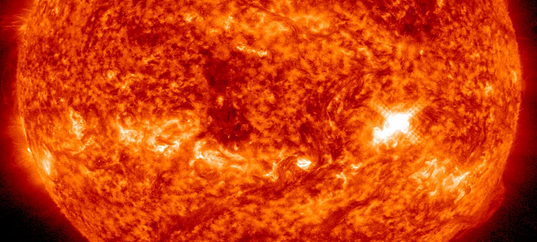
An impulsive solar flare reaching M3.3 erupted on August 17, 2013. The event peaked at 18:24 UTC from Active Region 1818. AR 1818 is classified with Beta-Gamma-Delta magnetic configuration and is capable of producing even stronger eruptions.
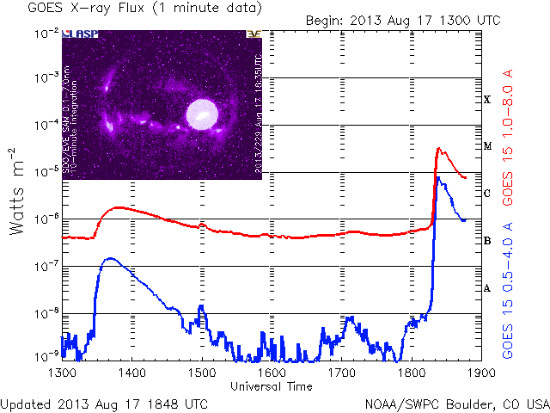
At 18:49 UTC a second M-class solar flare event started at the same region. At 18:56 UTC a Type II radio emission was registered. Type II emissions occur in association with eruptions on the Sun and typically indicate a Coronal Mass Ejection (CME) is associated with a flare event.
ALERT: Type II Radio Emission
Begin Time: 2013 Aug 17 1856 UTC
Estimated Velocity: 1399 km/s
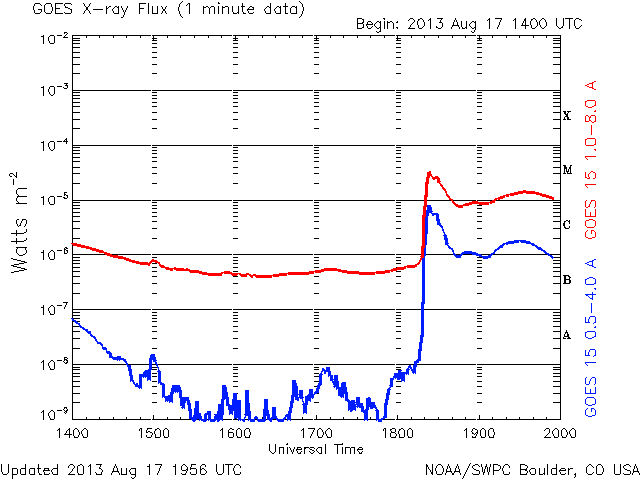
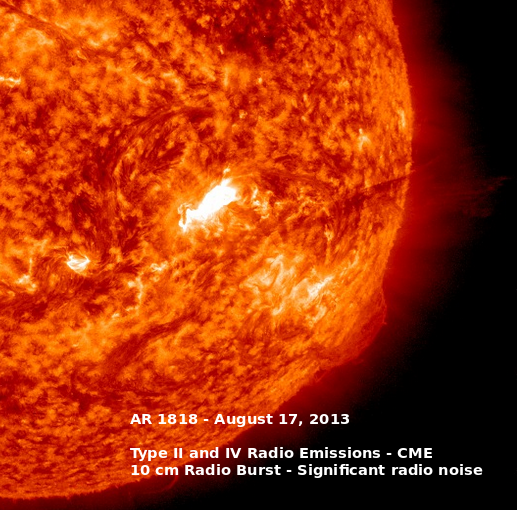
A Type IV radio emission was registered starting at 19:09 UTC. Type IV emissions occur in association with major eruptions on the Sun and are typically associated with strong Coronal Mass Ejections (CME) and solar radiation storms.
ALERT: Type IV Radio Emission
Begin Time: 2013 Aug 17 1909 UTC
Additionally, a 10 cm Radio Burst was associated with that event. A 10 cm radio burst indicates that the electromagnetic burst associated with a solar flare at the 10cm wavelength was double or greater than the initial 10cm radio background. This can be indicative of significant radio noise in association with a solar flare. This noise is generally short-lived but can cause interference for sensitive receivers including radar, GPS, and satellite communications.
SUMMARY: 10cm Radio Burst
Begin Time: 2013 Aug 17 1908 UTC
Maximum Time: 2013 Aug 17 1915 UTC
End Time: 2013 Aug 17 1933 UTC
Duration: 25 minutes
Peak Flux: 150 sfu
Latest Penticton Noon Flux: 120 sfu
The second M-class event peaked at 19:33 UTC as M1.4 solar flare and ended at 19:54. The majority of ejected material (CME) is headed south and west. CME produced by this event is visible in the following video:

NOAA SWPC forecasters estimated 35% chance for M-class, and 5% chance for an X-class event today.
Sunspots
There are currently 6 numbered sunspot regions on the disk. All of them are located in the southern hemisphere. Regions 1818 and 1817 are classified with Beta-Gamma-Delta magnetic configuration and are capable of producing strong eruptions.
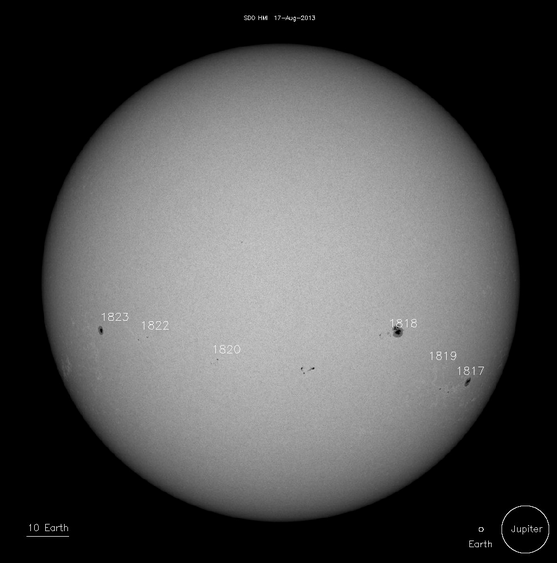

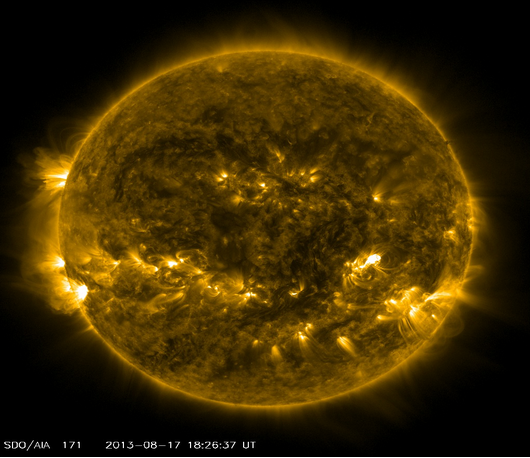

1817 – Beta-Gamma-Delta
1818 – Beta-Gamma-Delta
1819 – Beta
1820 – Beta
1822 – Beta
1823 – Alpha
Featured image: Courtesy of NASA/SDO and the AIA, EVE, and HMI science teams

Formation/Power up events of Tropical Storms / Typhoons in R5